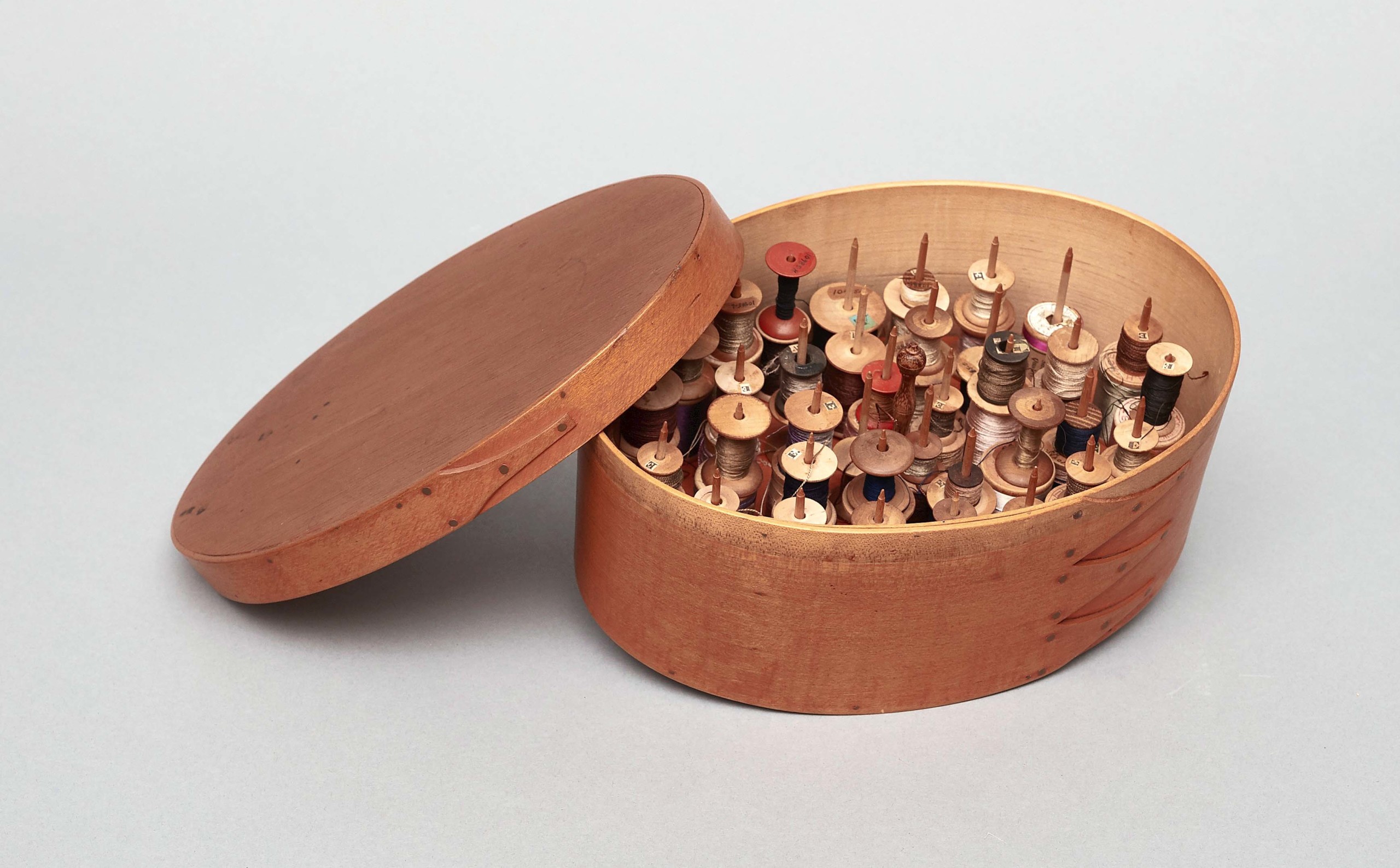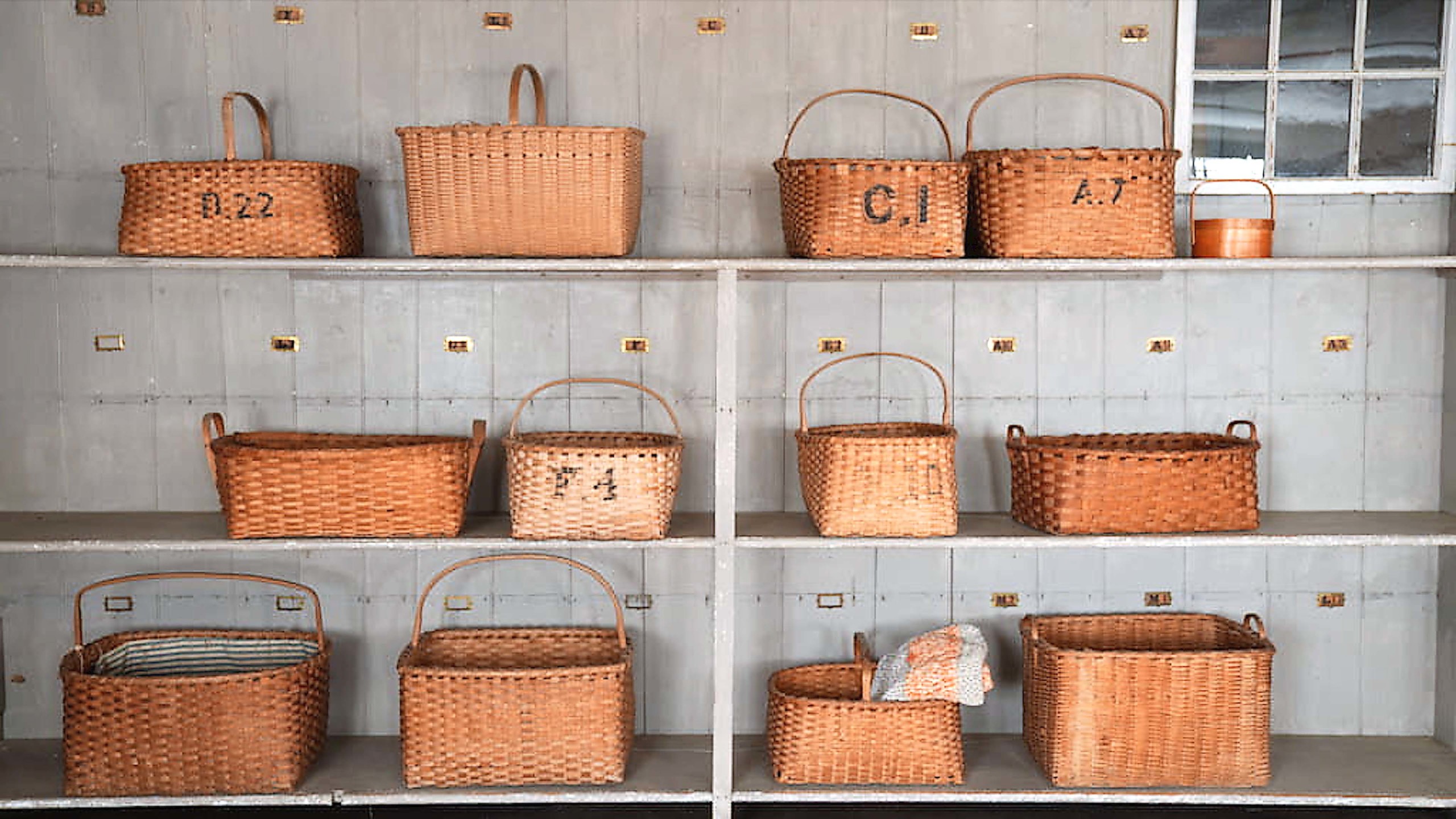
Round Shaker barn, Hancock Shaker Village, Pittsfield, Mass. Photo courtesy of Hancock Shaker Village.
By Fran Kramer
ROCHESTER, N.Y. — In 1944, composer Aaron Copland used that line, and others, in a ballet for choreographer Martha Graham and called it “Appalachian Spring.” Why did the line in a song composed in 1848 by Shaker Elder Joseph in Alfred, Maine, strike a chord almost 100 years later?
The United Society of Believers, or “Shakers,” sang their songs to express one of their enduring principles: strive for perfection by leading a simple life. The Shakers, led by a woman who became known as “Mother” Ann Lee and who, with eight other followers, sailed from England to New York in May 1774 to seek religious freedom. The Shakers became one of the most successful American communal groups, as their numbers and communities grew from one site that began to be established in 1776 in Watervliet, N.Y., to 19 communities in seven states by 1836.
Among other qualities, their resiliency, humanity and work ethic appealed to many Americans and the “World’s People,” as they called non Shakers, responded, not always with approval, but with great interest. The Shakers were also pragmatic, realizing that to sustain their movement, they needed not only members, but contact with the world, and they began selling their products. At first, agricultural ones, including seeds and herbs, then medicines and boxes, baskets and furniture. As early as 1850, the “lead” community at Mount Lebanon, N.Y., decided to open a chair factory. By 1874, they issued catalogs to the public, offering chairs with options: rockers or straight chairs, chairs with or without arms, and the color of the tape used in seats and backs.

Mount Lebanon (now called New Lebanon), N.Y., Shaker rocker #6, original tape seat under replaced cover. Archival photo courtesy Rathbun Gallery.
In 1876, the Shakers exhibited at the Centennial International Exhibition in Philadelphia. They tried to make the public aware, according to many sources, that their chairs must always invoke more than just a place to sit, they should invoke the history of the Shakers and their workmanship. Because of declining membership, in 1947, the Mount Lebanon Shakers sold their buildings and land to the Darrow School, a private boy’s school.
The other existing Shaker communities continued to resonate with their dedication to simple values and simple lives. They wrote of their lives and values in letters, books, almanacs and more to their own followers, who came from all walks of life, as well as the World’s People.
Two of the World’s People had an enormous impact in telling Shaker history: Edward Deming Andrews, a historian, educator and New York State Museum curator, and his wife, Faith. They lived near the Hancock Shaker community in Pittsfield, Mass. One day, the couple stopped to buy a loaf of bread from the Shakers. They went on to visit what they called “the friendliest people” and won their confidence. The Andrews learned about furniture craftsmanship from how the Shakers built their own chairs, tables, desks, and chests, and any other needed furniture forms. The Shakers also built their own buildings, often with the help from their worldly neighbors.

Aerial view of Canterbury Shaker Village, Canterbury, N.H. Photo courtesy Peter Bloch Aerial Productions.
The Andrews were among the earliest major collectors of Shaker objects and began writing a series of books about the Shakers upon the advice of Homer Eaton Keyes, the first editor of The Magazine ANTIQUES. Their first book, published in 1957, was The People Called Shakers. Since then, hundreds of publications, from small pamphlets to hard-bound books, have been written.
Important writers who spread the Shaker legacy included Charles Muller of Columbus, Ohio. He was the editor of the monthly Ohio Antiques Review, which may be familiar to some readers. He also co-authored with Tim Rieman the essential volume, The Shaker Chair. In Michigan, The World of Shaker, which was published by the Guild of Shaker Crafts, was acquired by Paul and Diana Van Kolken, who changed the name to The Shaker Messenger. The quarterly magazine was published from the fall of 1978 until March of 1996. Diana also wrote easy-to-read books about the Shakers, including Introducing the Shakers (1995).
Books on Shaker music, baskets, textiles, woodenware, architecture and “fancy goods” — items made by Shaker sisters for sale in community gift shops.

Oval maple and pine lidded box with spool holder, made by Elder James Johnson, Canterbury, N.H., 3-5/8 inches high, 9-5/16 inches wide, 6-7/8 inches deep. Collection of the Shaker Museum, Chatham, N.Y. The box is accompanied by a note in ink script that reads “A Present for / Elder Rufus” on one side, “By James Johnson, age. 73 yrs. / Chh. Canterbury, NH.” Photo courtesy of the Shaker Museum at Chatham, N.Y.
Some claimed Shaker furniture design and form were the only truly American style of furniture. With its ability to fit into any household, the simplicity and quality of Shaker products attracted the World’s People, and they became popular and collectible. Initially, they were simple gifts given by the Shakers to friends and neighbors who had helped them. Shakers would raise money by selling objects, sometimes to people who had admired them. Collectors could buy products directly from Shaker communities with shops, such as ones in Canterbury, N.H., and Sabbathday Lake, Maine.
Museums – from ones near Shaker sites to those in major US cities, including the Philadelphia Museum of Art and the Whitney Museum of American Art in New York City – began to collect Shaker objects. The Shaker aesthetic received international attention when, in 1992, the Whitney sent an exhibition on Hancock Village’s Shaker collection to Japan, where the simple Shaker aesthetic continues to resonate.
Auctioneers recognized the appeal and salability of Shaker goods. One of the first auctions of Shaker items with direct provenance to Shaker communities took place in 1922, when the South Union, Ky., community closed their village. It was followed by more auctions at various Shaker sites, including in 1961, when the Darrow School sold objects from Mount Lebanon.

Shaker baskets. Photo courtesy Canterbury Shaker Village, Canterbury, N.H.
More auctions followed, most notably the collections of pioneering collectors. These would include the collection of George and Gladys Jordan in 1968. In 1972, local Maine auctioneer Ed Casazza sold items from the Sabbathday Lake community to raise money for the restoration of several buildings. In 1981, Sotheby’s sold the Lassiter Collection.
Other public auctions of Shaker items, consigned by long-time collectors or their families, followed. In 1982, Willis Henry began what would become nearly annual Shaker auctions in which he sold the collections of Dr J.J. McCue and Karl Mendel. Skinner also conducted Shaker auctions, featuring works owned by Edward and Faith Andrews, Erhart Muller and others.
Antique dealers are among the World’s People who have learned and specialized in Shaker material culture. Pioneering dealers include the late Ed Clark (Bethany, Conn.), who stood out for his knowledge, and Doug Hamel (Chichester, N.H.), now retired and living in Maine, who knew the Canterbury Shakers well.

Interior, 1827 Meeting House, White Water Shaker Village, Harrison, Ohio. Photo courtesy of Friends of White Water Shaker Village.
Eventually, everyday collectors competed with celebrities who were also attracted to the Shaker aesthetic. Oprah Winfrey attended a Willis Henry sale and autographed catalogs. Barbra Streisand bought Shaker antiques at shows. Other celebrities who collected it were Ken Hakuta and Ken Burns, whose 1984 documentary, The Shakers: Hands to Work, Hearts to God, drew much interest.
What is the continued appeal of Shaker design? Shaker furniture exemplifies what we all need today: simplicity, quality in workmanship and functionality. It is more relevant than ever today in an increasingly complex technological world.
There were groups of the World’s People who came together annually to celebrate friendships and learn more about the Shakers. Professor Herb Wisbey of Elmira, N.Y., founded the Elmira College Shaker Seminar in 1975; Berkshire Community College professor Gus Nelson took that over in 1985 and changed the name to the Berkshire Community College Seminar. The last series became the Hancock Shaker Village Shaker Seminar, from 2000 to 2019.
On May 3-5, events commemorating the 250th anniversary of the Shakers will take place at Watervliet Shaker Heritage Society and the New York State Museum (Albany, N.Y.), Hancock Shaker Village (Pittsfield, Mass.) and the Shaker Museum (Chatham, N.Y.)

Aerial view of Shaker Village of Pleasant Hill, Pleasant Hill, Ky. Photo courtesy of Shaker Village at Pleasant Hill.
Shaker villages, or parts of them, remain and can be visited in Watervliet, N.Y.; New Lebanon (formerly called Mount Lebanon), N.Y.; Hancock, Mass.; Pleasant Hill, Ky.; South Union, Ky.; White Water, Ohio; Enfield, N.H.; Canterbury, N.H.; Alfred, Maine; Harvard, Mass.; and Sabbathday Lake, New Gloucester, Maine.
There are only two remaining members of the United Society of Believers Society left: Brother Arnold and Sister June, both at Sabbathday Lake, Maine, which also has many surviving buildings. Currently, staff at Sabbathday Lake are working on a matching grant from the Endowment for the Humanities to enlarge the original herb house, which also needs repairs and restoration. It will also be a place for the local community (or anyone) to come and spend time visiting a “new” cultural and traditional arts center.
The Shakers’ “simple legacy” and the “chord” remains for those who choose “the road now taken”; many who do may find their own “simple gifts.”
[Editor’s note: Fran Kramer has been a Shaker scholar for decades, after she and her husband, Herb, “found” the Shakers in the 1970s. A lecturer on Shaker history, she is particularly interested in the Shaker communities in western New York, notably the short-lived (1826-1836) Sodus Shakers who then moved south of Rochester, to Groveland, the last community (1836-1896) to be founded by the Shakers. Kramer is the author of Simply Shaker: Groveland and the New York Communities: A Catalog of an Exhibition at the Rochester Museum & Science Center (1991).]













